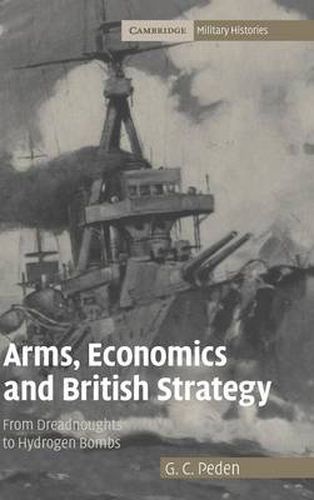Readings Newsletter
Become a Readings Member to make your shopping experience even easier.
Sign in or sign up for free!
You’re not far away from qualifying for FREE standard shipping within Australia
You’ve qualified for FREE standard shipping within Australia
The cart is loading…






This book integrates strategy, technology and economics and presents a new way of looking at twentieth-century military history and Britain’s decline as a great power. G. C. Peden explores how from the Edwardian era to the 1960s warfare was transformed by a series of innovations, including dreadnoughts, submarines, aircraft, tanks, radar, nuclear weapons and guided missiles. He shows that the cost of these new weapons tended to rise more quickly than national income and argues that strategy had to be adapted to take account of both the increased potency of new weapons and the economy’s diminishing ability to sustain armed forces of a given size. Prior to the development of nuclear weapons, British strategy was based on an ability to wear down an enemy through blockade, attrition (in the First World War) and strategic bombing (in the Second), and therefore power rested as much on economic strength as on armaments.
$9.00 standard shipping within Australia
FREE standard shipping within Australia for orders over $100.00
Express & International shipping calculated at checkout
This book integrates strategy, technology and economics and presents a new way of looking at twentieth-century military history and Britain’s decline as a great power. G. C. Peden explores how from the Edwardian era to the 1960s warfare was transformed by a series of innovations, including dreadnoughts, submarines, aircraft, tanks, radar, nuclear weapons and guided missiles. He shows that the cost of these new weapons tended to rise more quickly than national income and argues that strategy had to be adapted to take account of both the increased potency of new weapons and the economy’s diminishing ability to sustain armed forces of a given size. Prior to the development of nuclear weapons, British strategy was based on an ability to wear down an enemy through blockade, attrition (in the First World War) and strategic bombing (in the Second), and therefore power rested as much on economic strength as on armaments.